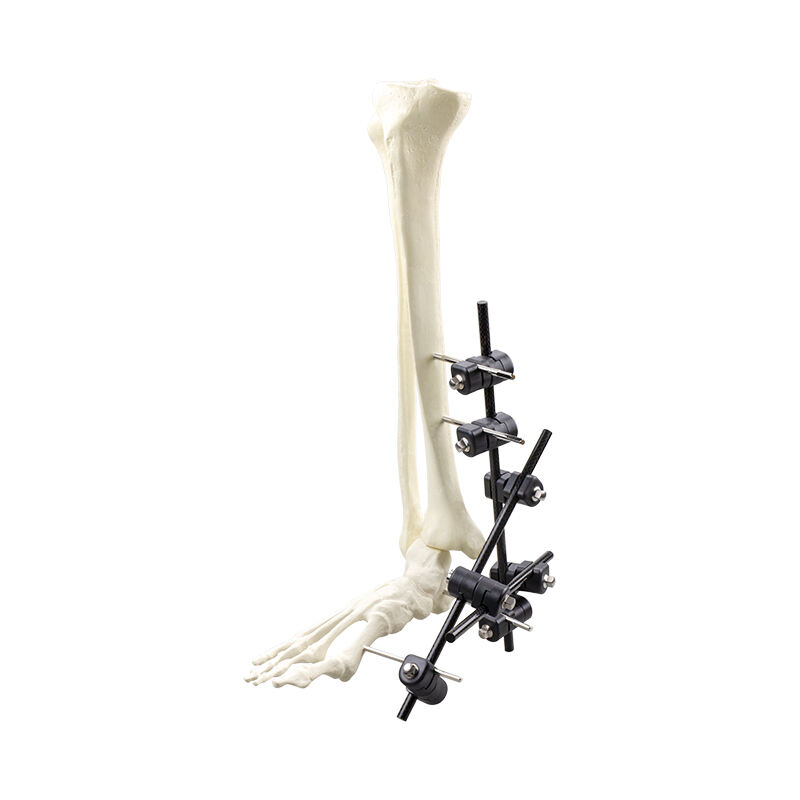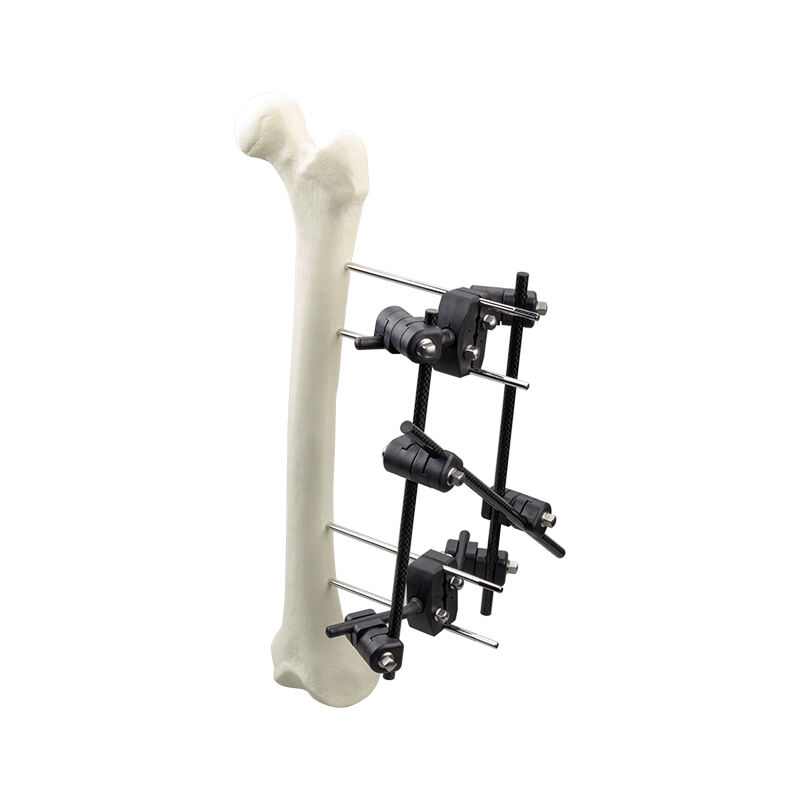Advancing Orthopedic Surgery Through Modern External Fixation Technology
External fixation systems have revolutionized the field of orthopedic surgery, offering unprecedented levels of precision and control in treating complex fractures and deformities. These sophisticated medical devices combine mechanical engineering principles with advanced surgical techniques to provide stable skeletal fixation while allowing for precise adjustments during the healing process. As healthcare technology continues to evolve, external fixation systems have emerged as a cornerstone of modern orthopedic treatment, enabling surgeons to achieve optimal patient outcomes with enhanced safety protocols.
The implementation of external fixation systems has transformed the approach to treating challenging orthopedic conditions, from severe trauma cases to gradual deformity corrections. These versatile devices provide a robust framework for bone stabilization while maintaining the flexibility necessary for post-operative adjustments, making them an invaluable tool in the orthopedic surgeon's arsenal.
Core Components and Design Principles
Structural Framework and Materials
Modern external fixation systems are engineered using high-grade materials that combine strength with biocompatibility. The primary framework typically consists of carbon fiber or medical-grade stainless steel components, carefully designed to provide maximum stability while minimizing weight. These materials undergo rigorous testing to ensure they can withstand the mechanical stresses of long-term fixation while remaining inert to biological processes.
The modular nature of external fixation systems allows surgeons to customize the configuration based on specific patient needs. From simple unilateral frames to complex circular constructs, the versatility of these systems enables precise adaptation to various anatomical challenges and fracture patterns.
Pin and Wire Technology
The interface between the external frame and the patient's bone tissue is achieved through specialized pins and wires. These components are manufactured with advanced coating technologies that enhance biocompatibility and reduce the risk of pin-site infections. The design of these pins incorporates specific thread patterns and tip geometries that optimize bone purchase while minimizing trauma during insertion.
Recent innovations in pin technology have led to the development of hydroxyapatite-coated pins, which promote better osseointegration and reduce loosening complications. This advancement has significantly improved the long-term stability of external fixation systems and reduced the need for pin replacement procedures.
Clinical Applications and Benefits
Trauma Management
External fixation systems excel in managing complex trauma cases, particularly in situations involving severe soft tissue damage or multiple fracture patterns. The ability to stabilize fractures while maintaining access to soft tissue wounds makes these systems invaluable in treating high-energy injuries and open fractures. Surgeons can establish immediate stability while preserving the biological environment necessary for healing.
The versatility of external fixation systems allows for staged procedures, enabling surgeons to address immediate stabilization needs while planning definitive treatment. This approach is particularly beneficial in polytrauma patients where immediate internal fixation may not be appropriate due to physiological conditions.
Deformity Correction
In the realm of deformity correction, external fixation systems provide unparalleled precision and control. The ability to make incremental adjustments without additional surgical procedures has revolutionized the treatment of congenital and acquired deformities. Surgeons can implement gradual correction protocols that minimize tissue trauma and optimize biological adaptation.
The implementation of computer-assisted planning and monitoring systems has further enhanced the accuracy of deformity correction procedures. These technological integrations allow for precise preoperative planning and real-time adjustment tracking, ensuring optimal correction outcomes.

Technological Innovations and Future Developments
Smart Fixation Systems
The integration of smart technology into external fixation systems represents a significant advancement in orthopedic care. Embedded sensors can now monitor loading patterns, tissue response, and healing progression in real-time. This data-driven approach enables surgeons to make informed decisions about adjustment protocols and treatment progression.
Emerging technologies include wireless monitoring systems that can alert healthcare providers to potential complications before they become clinically apparent. These innovations are paving the way for more proactive and personalized treatment strategies.
3D Printing and Custom Solutions
The advent of 3D printing technology has opened new possibilities in the design and manufacture of external fixation systems. Custom-printed components can be tailored to specific patient anatomy and clinical requirements, optimizing the mechanical efficiency of the construct while improving patient comfort.
Research into biocompatible materials and surface treatments continues to advance, promising even more sophisticated solutions for complex cases. The combination of 3D printing technology with patient-specific modeling allows for unprecedented levels of customization in external fixation solutions.
Frequently Asked Questions
What makes external fixation systems particularly advantageous in complex trauma cases?
External fixation systems provide immediate stability while allowing access to soft tissue injuries, making them ideal for complex trauma cases. They enable staged treatment approaches and can be adjusted as swelling changes, offering flexibility that internal fixation methods cannot match.
How long does recovery typically take with external fixation systems?
Recovery time varies significantly depending on the specific condition being treated and individual patient factors. Typical treatment durations range from 6 weeks for simple fractures to several months for complex deformity corrections. The ability to make adjustments without additional surgery often results in more predictable healing timeframes.
What recent technological advances have improved external fixation outcomes?
Recent advances include smart monitoring systems with embedded sensors, computer-assisted adjustment protocols, and 3D-printed custom components. These innovations have enhanced precision, improved patient monitoring, and enabled more personalized treatment approaches, ultimately leading to better clinical outcomes.
 EN
EN
 FR
FR
 ES
ES
 AR
AR

